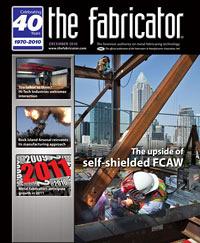Editor-in-Chief
- FMA
- The Fabricator
- FABTECH
- Canadian Metalworking
Categories
- Additive Manufacturing
- Aluminum Welding
- Arc Welding
- Assembly and Joining
- Automation and Robotics
- Bending and Forming
- Consumables
- Cutting and Weld Prep
- Electric Vehicles
- En Español
- Finishing
- Hydroforming
- Laser Cutting
- Laser Welding
- Machining
- Manufacturing Software
- Materials Handling
- Metals/Materials
- Oxyfuel Cutting
- Plasma Cutting
- Power Tools
- Punching and Other Holemaking
- Roll Forming
- Safety
- Sawing
- Shearing
- Shop Management
- Testing and Measuring
- Tube and Pipe Fabrication
- Tube and Pipe Production
- Waterjet Cutting
Industry Directory
Webcasts
Podcasts
FAB 40
Advertise
Subscribe
Account Login
Search
The Army’s manufacturing muscle
The Rock Island Arsenal stands at the ready to meet the U.S. Army's fabricating needs
- By Dan Davis
- December 9, 2010
- Article
- Shop Management

Figure 1: Millions of dollars have been spent over the last decade repairing the older buildings that make up the Rock Island Arsenal. Some of the buildings are almost 100 years old, such as the one where the Mark VIII (Liberty) tanks were manufactured in 1919, too late for World War I
Many metal fabricators in the U.S. recently have had some part in fabricating for the military, especially for items such as armor kits for military vehicles that had to cope with the realities of improvised explosive devices in Iraq and Afghanistan. They dutifully accepted the orders and turned them around as quickly as possible. But what if it were actually their sole job to respond to the needs of the U.S. military? After all, the military is just one more customer segment for most fabricators; it’s not their call of duty.
That’s why the Rock Island Arsenal (RIA) exists. Nestled between Davenport, Iowa, and Rock Island, Ill., in the middle of the Mississippi River, the arsenal’s mission is “to provide world-class manufactured products, services, and logistics in support of the nation.” It’s the rapid-response, one-stop shop for metal manufacturing—from design and prototyping to full-scale production. It answers to one customer—the men and women in the armed forces.
The arsenal has had time to hone its mission, being established as a manufacturer of military equipment, ordnance, and field gear in the 1860s (see Figure 1). However, the greatest changes probably occurred in recent years as it has worked to embrace modern manufacturing practices. The results have been noticed in a big way by the outside world:
- RIA earned a 2007 Shingo Public Sector Gold Medallion for its Forward Repair System (FRS) modules, a sort of job shop in a box that can be delivered to remote locations (see Figure 2), and a 2007 Silver Medallion for its Shop Equipment Contact Maintenance (SECM), a smaller version that fits on a truck.
- RIA is registered to ISO 9001:2008 and certified to the Army Materiel Command’s Contractor Performance Certification Program, making it the first government-owned and -operated facility to be recognized.
- In 2009 the secretary of the Army named RIA a Center for Industrial and Technical Excellence for its mobile maintenance systems. The designation allows the arsenal to enter into public-private partnerships to enhance manufacturing capabilities and broaden core competencies.
That’s the nature of manufacturing at RIA: years of experience embracing new thinking. RIA operates the only foundry in the Army family and still employs old-school drop hammers from 1,000 to 8,000 pounds to beat parts into the correct size, but also recently installed state-of-the-art titanium casting equipment, capable of making up to 45-lb. castings that fit into a 30- by 32- by 28-in. envelope. “Now we are working with the researchers and the top engineers to feed these new furnaces and get the titanium into the designs,” said Randl Besse, RIA’s business development specialist and a tour guide for a morning trip through the 1.5 million square feet of manufacturing space. RIA utilizes a building with wooden blocks still lining the floor, yet that and other buildings are arranged in such a way to minimize part travel time between machines (see Figure 3), a hallmark of lean manufacturing principles.
Overall RIA has 240 CNC manufacturing machines and more than 550 conventional machines. Such capacity is necessary when it has to be able to turn around a one-off product, such as a replacement part for an M198 howitzer, or churn out the FRS mobile maintenance line of equipment, which reached about 40 units per month at the height of production.
Of course, metal fabricating plays a key role in some of RIA’s key “product” lines, and the arsenal doesn’t waste its manufacturing capacity—or human talent.
Making It Fast and Better
Keith Piersall is working with an old Pines bender (see Figure 4) on this summer day as the machine bends a 0.25-in.-thick stainless steel tube for the M119A2 howitzer (see Figure 5). The howitzer is a lightweight, tow-behind gun that has seen plenty of action in the recent conflicts the U.S. Army has been involved in.
“The whole gun is stainless steel. Most of it is fabricated, believe it or not,” Piersall said.
The M119 is a good example of RIA’s ability to do the job others can’t. The arsenal has outsourced the tube bending job for the howitzer’s trail assemblies at least a half dozen times, but the tubes always came back with bad bends. The bender, which came from an old shipyard, is unique in that it utilizes a mandrel that slowly expands at the bottom of the bend as the tube revolves. The machine is slow but fairly precise, delivering parts within a spec tolerance of 0.10 in.
It’s not a job for a novice operator because all the gauges must be watched carefully to ensure that the proper bend is made. Piersall said that the machine can deliver about four tubes per shift.
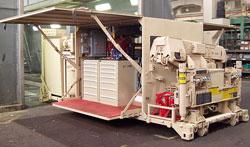
Figure 2: The Forward Repair System module is fabricated in a focused factory in one of the arsenal’s 28 buildings. Forward-thinking manufacturing practices such as this helped RIA earn external recognition for its efforts in ramping up manufacturing of its mobile maintenance products.
Because the howitzers are handmade, RIA’s welders play a huge role. The arsenal has more than 50 welders who work over three shifts. All are Amercian Welding Society-certified to perform the welds they commonly are required to make on a daily basis.
“With the types of jobs we have here and the welding and brazing processes we do here—you have to be on your game,” said Jim Knapp, a work leader in the weld shop.
Welders perform gas metal arc, gas tungsten arc, and shielded metal arc welding on aluminum, carbon steel, and stainless steel sheet and plate. Welders work in 30 cells that can be reconfigured easily to accommodate larger weldments. Because the Army is looking to incorporate more titanium into its designs, welders are working on becoming certified for GMAW on the exotic metal.
RIA also has a robotic GMAW cell, in addition to electron beam, orbital welding, and submerged arc welding capabilities.
“You’ve got to keep yourself tuned up and make yourself valuable to the Rock Island Arsenal,” Knapp said.
The versatility of the welding shop is mirrored in the fabricating operations. RIA has 13 lasers (see Figure 6), including one 4,000-W tube laser; seven waterjets; two NC press brakes; a turret punch machine; tube forming equipment; and bending, notching, sawing, and straightening capabilities to meet the needs of its fabricating jobs.
The metal cutting capabilities have proven necessary over the past 10 years as RIA worked with the thicker material required for the armor kits (see Figure 7) that are shipped to the soldiers in the field. The laser cutting machines can cut steel up to 1 in. thick and aluminum and stainless steel up to 0.375 in. Anything thicker can be cut on the waterjet machines, which can slice metal up to 6 in. thick.
The fabricating equipment capacity also enables RIA to absorb jobs, and rather large-sized jobs at that, which require a rapid response. For example, when an increasing number of troops were being injured in rollover incidents involving troop carriers in Iraq, RIA quickly responded with the fabrication of the cab for the Red River Army Depot’s Roll Over Simulation Egress Trainer (see Figure 8). The metal “box” replicates the troop carrier’s cab and the rear where the troops sit. The simulator can be tossed when hooked up to hydraulics, and troops can get the feel for what may happen during an accident and learn how to exit in the quickest way possible.
Making It More Efficiently
For its mobile maintenance “products,” which RIA fabricates on a more consistent basis than other jobs that are more short-run projects, the arsenal has established focused factories. All the elements of the welding and fabrication area—weld cells, waterjets, band saws, flame cutters, and machining centers—are located in one building and serve to fabricate the parts needed to create these units.
These mobile maintenance products include the Forward Repair System and the Shop Equipment Contact Maintenance mentioned earlier. The FRS is a maintenance shop on a pallet that a truck can deliver to any remote site. The unit contains 690 tools, including a full-scale crane capable of lifting a vehicle engine, generators, air compressors, welding and cutting equipment, air jacks, and protection, if needed. The SECM has many of the same tools, but in a more mobile format. A generator provides the truck with 5 kW of power, and storage cabinets with drawers with high-density polyethylene inserts with cutouts keep the hand and pneumatic tools organized.
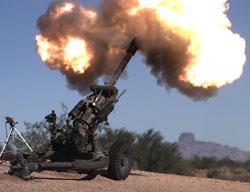
Figure 5: The M119A2 105-mm, lightweight towed howitzer is fabricated mostly from stainless steel. The weapon weighs approximately 4,000 lbs. and is designed to be moved by air and dropped by a parachute. It is commonly used to provide direct and indirect fire support for troops on the move.
The focused-factory approach has enabled RIA to produce these mobile maintenance products in a much more expedient manner. With the tools and expertise nearby and a manufacturing flow established to keep the units moving until they are fully manufactured, RIA has improved its production efficiency from four units per month up to 40, when pressed.
That same focused-factory approach has been applied to a new small-arms parts manufacturing area (see Figure 9) opened this year. The Soldier Weapons Readiness Center is laid out in a way that allows one-piece manufacturing flow and keeps all the key parties involved in parts repair and manufacturing—engineers, machinists, and quality technicians—together for quick consultations.
Approximately 100 different components are manufactured and remanufactured in the facility. Each order can comprise thousands of parts. Examples of parts that have been worked on are sight posts for the M16 machine gun and a collapsible buttstock for the M249 light machine gun.
Besse said the current conflicts have been particularly “small arms-intensive.” As a result, repair parts, which require extremely high tolerances, need to be available constantly.
“We can turn parts around here very quickly,” he added.
Making It Lighter and Safer
The hydraulic press (see Figure 10) in a refurbished section of an old warehouse on the RIA campus might look familiar to a metal fabricator, but the material being formed in that press may not be.
That’s because the press is used to form layers of composite materials, such as fiberglass and Kevlar®, into panels that then are used in armor packages. It’s part of RIA’s latest initiative, the Composite Armor Center (CAC), a partnership with defense contractor BAE Systems. The private side of the partnership provides the technical expertise and the material, and the public side provides the technology, labor, and potential applications.
“As much as I’m a composite guy, and we want it everywhere, metals and alloys will always have their place,” said Peter Fitzgerald, senior manufacturing engineer, security and survivability, BAE Systems. “It’s always a balance between safety, weight, and cost.”
The RIA-CAC had its public unveiling this summer. Currently four RIA employees are trained to prepare the composite platens and operate the equipment that creates the panels. The hydraulic press, using a combination of pressure and heat, can be used to create composite panels as large as 70 by 70 in. An autoclave can create panels as large as 84 by 156 in. A large oven is used to cure the final composite panel.
Douglas Klundt, an RIA program manager, said most of the jobs are limited to add-on armor for current vehicle designs, but future vehicles and weapon systems will include composite materials to lighten overall weight and increase soldiers’ safety. Right now RIA is learning what combination of materials works best for specific applications.
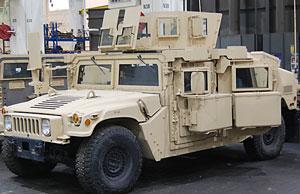
Figure 7: One of the armor kits made for the High Mobility Multipurpose Wheeled Vehicle was the Objective Gunner Protection Kit. This add-on armor was developed to enhance soldiers’ manning of roof-mounted gun turrets. The system was designed to be modular for easy field replacement and uses existing attachment points for quick installation, with no special tools required.
As the body of knowledge about composites increases, RIA is ready to expand the CAC, preparing for potential high-volume production should it be needed. Future plans call for a larger-tonnage press, pattern cutters for the composite material, and a larger autoclave.
Making It Proudly
A lot can be said about all the manufacturing capacity at RIA. This story doesn’t even cover the new, giant seven-axis bridge mill affectionately known as Godzilla or the huge expansion of the arsenal’s finishing line. The equipment is an important part of the story, indeed, but it’s not the whole story.
The more than 1,700 people who work at RIA arguably have a higher calling than typical manufacturing workers. Their customers are in harm’s way, and any shortcoming related to quality or delivery can have deadly results.
At the change of command ceremony in early September, Col. James O. Fly Jr., the new commanding officer of RIA-Joint Manufacturing & Technology Center (JMTC), summed it up nicely:"I have personally witnessed the effect the arsenal can have on the battlefield—from the fielding of the first HMMWV armor kits in northern Iraq in 2003, responsive support to the light artillery of the 25th ID during its deployment in Afghanistan in 2005, and to the FRAG 5 and OGPK armor fieldings I witnessed in 2006 when I returned to Iraq as a battalion commander. There is no doubt that the lives of many soldiers have been saved by the innovation and manufacturing skills resident on this small island in the Mississippi.
"Rock Island Arsenal exists to sustain soldiers' readiness needs in peace, to jump start mobilization of the industrial base in times of war, and to help keep our soldiers one step ahead of ever evolving enemy threats …
"I am in awe of the capability of this arsenal, and it's an honor to be counted among your ranks."
RIA-JMTC is manufacturing with a mission, not just a mission statement.
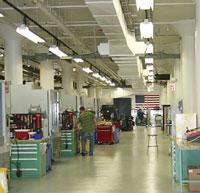
Figure 9: Small-arms manufacturing, one of RIA’s core competencies, has been bolstered with the opening of a new focused factory dedicated to small-arms parts manufacturing and reconditioning. A lean manufacturing expert helped to lay out the “factory within a factory,“ ensuring a commonsense manufacturing flow.
About the Author

Dan Davis
2135 Point Blvd.
Elgin, IL 60123
815-227-8281
Dan Davis is editor-in-chief of The Fabricator, the industry's most widely circulated metal fabricating magazine, and its sister publications, The Tube & Pipe Journal and The Welder. He has been with the publications since April 2002.
subscribe now

The Fabricator is North America's leading magazine for the metal forming and fabricating industry. The magazine delivers the news, technical articles, and case histories that enable fabricators to do their jobs more efficiently. The Fabricator has served the industry since 1970.
start your free subscription- Stay connected from anywhere

Easily access valuable industry resources now with full access to the digital edition of The Fabricator.

Easily access valuable industry resources now with full access to the digital edition of The Welder.

Easily access valuable industry resources now with full access to the digital edition of The Tube and Pipe Journal.
- Podcasting
- Podcast:
- The Fabricator Podcast
- Published:
- 04/16/2024
- Running Time:
- 63:29
In this episode of The Fabricator Podcast, Caleb Chamberlain, co-founder and CEO of OSH Cut, discusses his company’s...
- Trending Articles
AI, machine learning, and the future of metal fabrication

Employee ownership: The best way to ensure engagement

Steel industry reacts to Nucor’s new weekly published HRC price

Dynamic Metal blossoms with each passing year

Metal fabrication management: A guide for new supervisors

- Industry Events
16th Annual Safety Conference
- April 30 - May 1, 2024
- Elgin,
Pipe and Tube Conference
- May 21 - 22, 2024
- Omaha, NE
World-Class Roll Forming Workshop
- June 5 - 6, 2024
- Louisville, KY
Advanced Laser Application Workshop
- June 25 - 27, 2024
- Novi, MI
























